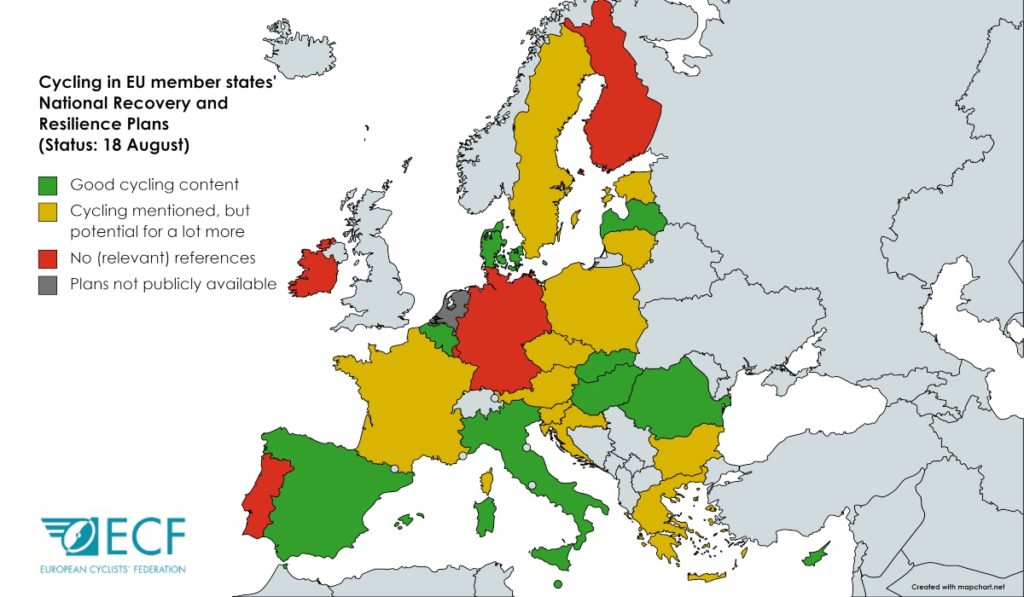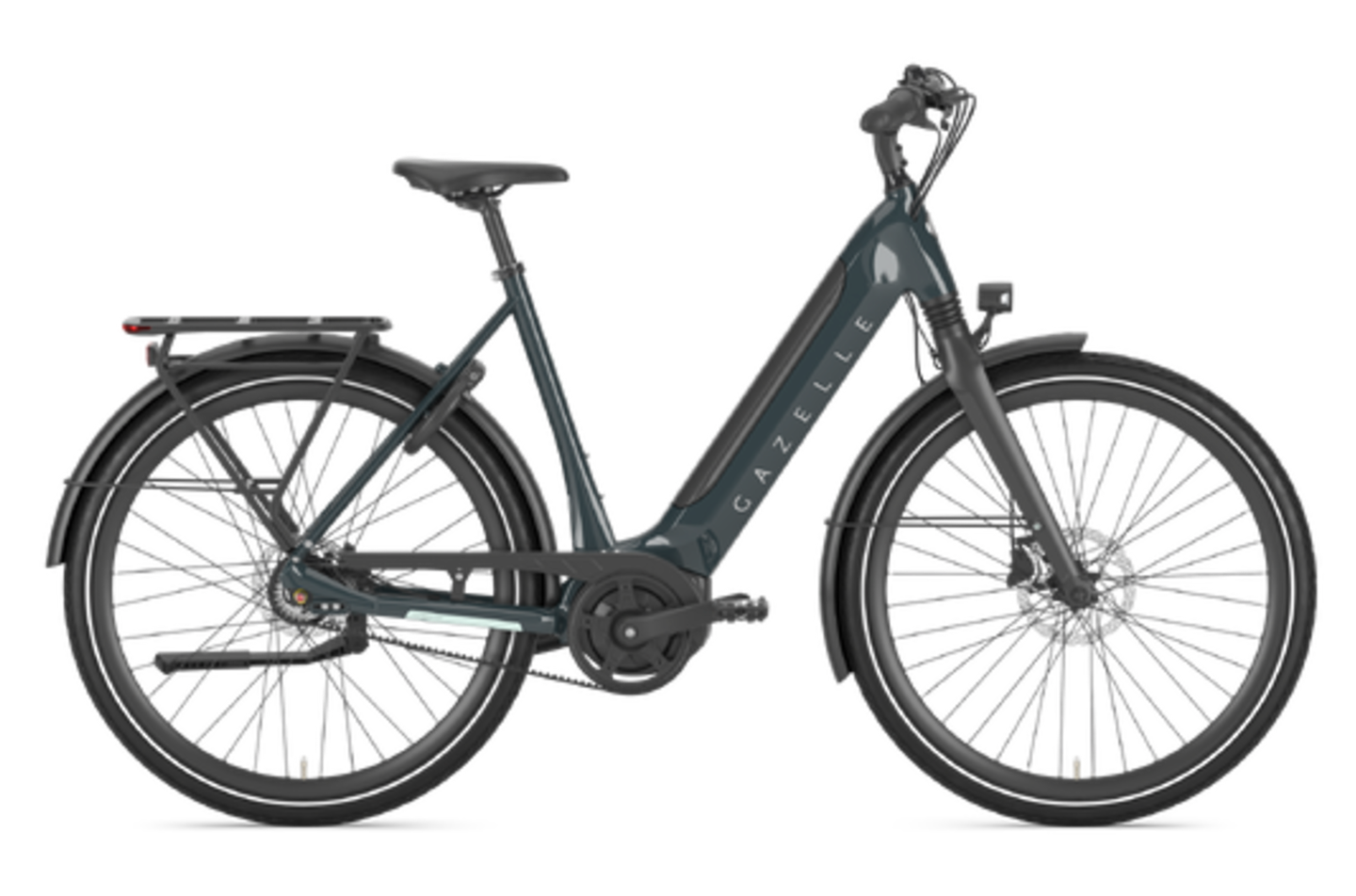August 19, 2021 - Since ECF’s last analysis, most EU countries now mention cycling in their COVID-19 recovery plans, with €1.7 billion earmarked for cycling infrastructure, safety, tourism and promotion, confirming its importance for Europe’s sustainable recovery.

Since April 2021, 25 member states have submitted their National Recovery and Resilience Plans (NRRPs) to the European Commission, outlining priorities for the funds that will be disbursed from the Recovery and Resilience Facility (RRF), which is part of the EU’s €750 billion COVID-19 pandemic recovery plan.
According to the General Dutch Press Agency (ANP), the two countries that have yet to submit their plans to the Commission are Bulgaria, which has published a draft but not submitted it yet, and the Netherlands, which wants to wait for a new government to form after the election that took place in March. In the meantime, some countries have already started receiving money from the Recovery Fund, including Belgium, Portugal and Luxembourg.
So what has changed since ECF’s last analysis in May?
New recovery plans
Five countries eventually published a recovery plan for the first time, with direct or indirect cycling content:
- Bulgaria includes measures for an urban mobility reform addressed to the implementation of infrastructure for safe urban mobility aimed at vulnerable road users, namely pedestrians and cyclists.
- Estonia includes investments for local authorities to use on walking and cycling infrastructure, with €5 million going to the development of 24km of cycling and walking paths. This includes: 1) completing walking and cycling connections with railway stations and public transport stops with the rest of the network; 2) developing paths outside larger urban areas to help eliminate unsafe bottlenecks for cycling.
- Malta envisages two reforms that indirectly include cycling. The first is the creation of more open and car-free spaces across Malta and the island of Gozo and the adoption and implementation of policies promoting the sustainability of the transport sector, including by encouraging the use of multimodal transport. The second is an investment directly aimed at the creation of purchase incentives for e-bikes in the private sector.
- Slovenia’s recovery plan section on sustainable mobility mainly focuses on rail and alternative fuels. However, cycling is mentioned in the sustainable tourism section, where investments in cycling trails and walking paths are envisaged.
- Sweden’s plan includes cycling in a very general pillar dedicated to local and regional climate investments, which “can be about everything from biogas and infrastructure, such as cycle paths, to the destruction of nitrous oxide and to replace heating systems from oil for district heating.”
Read the full report here.


















